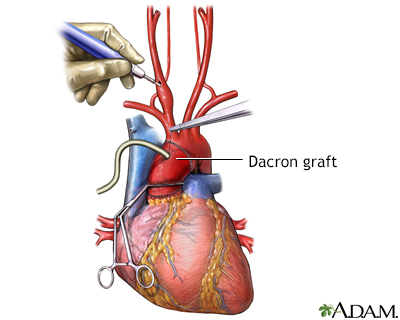Prosthetic graft
Definition
A prosthetic graft is made out of a man-made (synthetic) polyester material. It is used to replace natural body tissues. Most grafts are in the shape of a tube to replace or repair blood vessels. A graft can be used as a stent to repair an artery, blood vessel, or other hollow structure in your body (such as the tube that carries urine) to hold it open.
The most common graft material is made of Dacron.
A prosthetic graft causes very few reactions. It has no harmful chemicals and is easy for our bodies to tolerate. When it is used in blood vessels, our bodies grow a new lining to the graft over time. The lining is like our natural blood vessel linings.
Improvements to prosthetic grafts have reduced the risk of graft infection, but infections can still occur.
Gallery

References
Kayssi A, Neville RF. Prosthetic grafts (heparin-bonded and spiral grafts). In: Sidawy AN, Perler BA, eds. Rutherford's Vascular and Endovascular Surgery. 9th ed. Philadelphia, PA: Elsevier; 2019:chap 64.